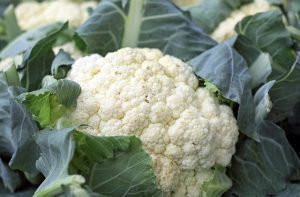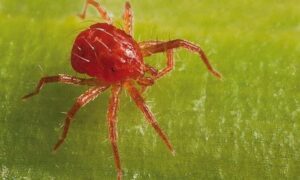In the lettuce cultivation guide, we explained that lettuce(Lactuca sativa L.) has been, is and will remain one of the queens of the garden. If you have a garden and do not have lettuce …. is like something is missing. And is that the great availability of varieties makes that we can have lettuce throughout the year for our salads. Another of the benefits of having lettuce in the garden is that it invites us to experiment with new varieties and takes us out of the routine of the everyday salad. If you shop in a supermarket, it is very likely that you will go for romaine lettuce or iceberg lettuce. However, when you grow them in the garden, you will unwittingly go for oak leaf, trocadero, red batavia, green batavia, lollo rosso and an endless number of others.
Undoubtedly, it is a crop that should not be missing in any vegetable garden or potted garden.
WHEN AND HOW TO SOW
In the lettuce cultivation guide we will explain the transplanting seasons, we can say that all year round. The easiest way is to do direct sowing by broadcasting, thinning as the plants develop to leave the appropriate spaces. About 25-30 cm between plants is common. Direct sowing cannot be done all year round, so the sowing in the seedbed and the subsequent transplanting through pricking out is of great importance.

It is also true that being a plant of easy cultivation and growth is good to have a good batch of seedlings with staggered planting, so we will have this delicious plant in production in our garden throughout the year thanks to the guide to the cultivation of lettuce.
IRRIGATION
One of the most important things is that we must avoid waterlogging at all times (certain rotting of the neck), so we will not water very abundantly but frequently, keeping the humidity level as stable as possible. Drip irrigation or exudation are still the ideal systems for this crop because of their constant flow rate without waterlogging problems.

MUST BE TIED ?
Lettuces have a fast growth rate: in about three months after sowing they will be ready for harvesting. Generally, they are left to grow on their own, because as long as they have water and the necessary nutrients when we taste them, we will know that they will be delicious. However, there are some varieties, such as the romana, which should be tied 5 or 6 days before harvesting.

By tying the buds, what is achieved is a better development of the bud, at the same time that the parts that will be hidden from the sun are bleached. But if we are much more interested in the leaves than in the bud, it is not important to do so.
HOW AND WHEN TO HARVEST
Thanks to the lettuce growing guide we are going to teach you when to harvest lettuce will depend entirely on when you plant it, lettuce is a cool season crop that cannot tolerate intense heat and therefore it is important to harvest lettuce before temperatures rise too high in the summer. We must also remember that there are varieties that glean less and are the ones that should be planted in the summer season.
The variety you have planted also determines when to harvest. As a general rule, lettuce that was harvested in the fall will take about 65 days to harvest, while lettuce that was planted in the winter will take about 100 days to harvest.

The best way to harvest lettuce is to use a sharp knife to cut off the stem heads while they are still firm. Simply make a clean cut just below the head through the stem. Lettuce heads should also always be harvested in the morning when temperatures are not too high.
If you have little space and want to get more out of your lettuce, you don’t need to harvest it whole, pulling the leaves that you are going to consume that day is more than necessary, the plant will continue to grow without problems and you will enjoy it for more fresh days.
COMMON DISEASES AND PESTS
I NSECTS.
- Gray cutworm (Agrotis sp.) Gray cutworm affects a wide variety of plants, including potatoes, beets, asparagus, cruciferous plants, etc. It tends to be attracted to cool, moist areas such as those provided by lettuce cultivation. At night they feed on leaves and during the day they hide under the ground.
- Leafminers (Liriomyza trifolii) Inside the lettuce leaf, the larvae excavate galleries while feeding on the parenchyma tissue. This pest pays special attention at the beginning of planting, delaying the onset of ripening or even rejecting the commercial product.

- Whitefly (Trialeurodes vaporariorum) The whitefly is very polyphagous and attacks a wide variety of crops. Damage occurs when it feeds on plant sap, causing yellowing and subsequent weakening of the plant. At the same time, they produce honeydew and attract infection by the “negrilla” fungus. Another major problem of the whitefly is that it is a carrier of viruses that cannot be treated and can destroy the crop in a short period of time.
- Thrips (Frankliniella occidentalis) The thrips is an insect that is present in a large number of crops and one of the most problematic. Symptoms on lettuce appear after the thrips bite on the leaf. The level of crop damage depends on the population and the number of stings. However, the most problematic aspect of Frankliniella occidentalis is its ability to carry numerous viruses, including Tomato spotted wilt virus (TSWV).
DISEASES.
- Alternaria (Alternaria dauci – Stemphyllium spp.) In order to recognize this disease caused by a fungus, it is necessary to detect small dark spots on lettuce leaves. It tends to develop in high humidity conditions, so sometimes preventive action is taken during rainy seasons.
- Anthracnose (Microdochium panattoniana) It usually appears on the oldest leaves before the rest of the leaves, with special predominance on the central nerve, petiole and leaf blade. Small, sunken, yellowish spots with a reddish or necrotic margin appear on the leaves. Over time, the reddish ring extends inward, necrotizing the entire stain.
- Sclerotinia (Sclerotina sclerotiorum) This disease causes the appearance of whitish soft rot on lettuce leaves. Infection starts in the basal part of the plant and spreads over time. This fungus can remain in the soil for up to 5 years.

- Powdery mildew (Erysiphe cichoracerum) Powdery mildew is a well-known fungal disease that is widespread in almost all crops. It usually develops both on the upper and lower side of the leaf, covering the outer leaves with a whitish mycelium of powdery appearance. It usually appears when the climate is not very humid (relative humidity around 70%) and when there is no rainy season.
- Gray rot (Botrytis cinerea) This fungus can appear at any vegetative stage of the lettuce crop. It is usually linked to excess humidity, so irrigation control is very important. Aeration is also a good technique to prevent the spread of this disease. The attack usually starts at the base of the lettuce, although it can also appear on leaves that have wounds, problems or physiopathies.
- Septoria (Septoria lactucae) Septoria produces spots on the underside of leaves. For this fungus to appear, the crop must be in areas of high humidity or rainy season. Small, irregularly shaped chlorotic spots appear on the leaves. With time, these spots become necrotic and a chlorotic ring forms around them, a symptom of disease progress.
PRODUCTS WE RECOMMEND FOR THIS CROP

